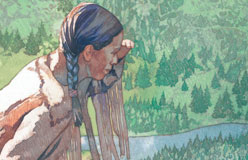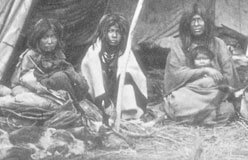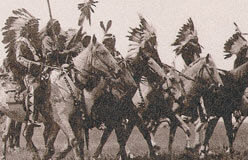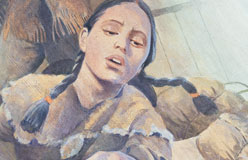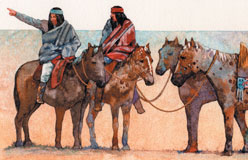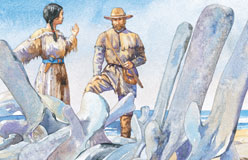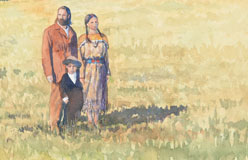By the summer of 1805, Lewis and Clark were desperate to find the Shoshone. They needed to buy horses so they could cross the Rocky Mountains before winter.
On July 22, Sacagawea began to see places she knew. She told the captains that up ahead was where three smaller rivers come together to form the Missouri. The group was glad to hear this. A few days later, they reached the three forks. Sacagawea told them that this was where her people had been camped when the Hidatsa kidnapped her. In his journal, Lewis wrote: “She does not... show any distress at these recollections, or any joy at the prospect of being restored to her country.” He would soon see how wrong he was.
